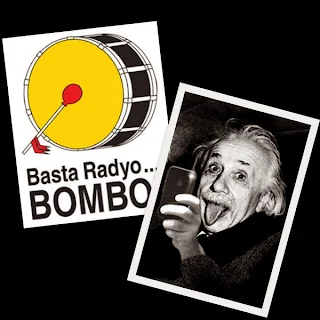The best times in your home were those days filled with laughter, because your mother would say words or speak a language that was so powerful that even now you still know what they meant—long after you’ve gone from there, long after she’s gone.
Your mother’s words we so full of images that she needed not say more to put her message across. She used a language to you, her children, which spoke more than it sounded.
Hers was the kind of language that you now consider very figurative—in its foremost sense, metaphorical—i.e. “expressing something in terms that normally mean another.”
Your mother’s language was graphic that it simply seeped into your consciousness with little effort, or sometimes none at all. You recall these words and phrases and surmise their sense and sensibilities one by one.
At times when your Mother would get angry at you or any of your siblings, upset by what you had done, she would say, "Mga ‘págsusulít kamo! or ‘págsusulít ka!" if she is just addressing one of you. She would say this to you, not so much as a curse but as an expression of resignation—but only when you gravely upset her.
She scolded you using a language that would not necessarily piss you off in turn but rather only make you think. Whether you received her scolding lightly or seriously, her words would still make you think—how could you even manage to ask what they meant if she was fuming mad?
From such words you now create your own meaning. Perhaps it came from the more complete ipágsusulít ka (kamo), extending it to mean, ipagsusulit kamo sa tulak kan ina nindo, which is very much like, “I wish you’ve never been born,” or to that effect.
With those words, she seemed to say that she regretted having given birth to you—this is so sad because she might as well be cursing herself—that perhaps you are one of her wrong decisions.
So you or any of your siblings would try to appease her, but sometimes to no avail. It would take the efforts of your Lolo Miling, her dear father, to make you say sorry to her, or to patch things up—only because she had already fainted and lost consciousness, something that would surely call your grandfather’s attention.
You would regret this because it entitled you to a “date” with the grand patriarch himself, who would “grace” you with his “sermon” once you were summoned to the Libod, your mother’s ancestral house, your grandparents’ domain.
Your grandfather was both a teacher and a military man—which made clear that any of you could not simply break your mother’s heart, or else you face him squarely. And if you’d done so, you’d now brace yourself for a harsher military rhetoric, both well expressed and eloquent. You might as well call it some “repentance regimen,” a bitter pill you deserved for hurting your mother.
When you reasoned out with him, or even started mumbling your own juvenile piece, your regime would now include kneeling on salt or mongo seeds taken from your Lola Eta’s farm. Your dear grandmother never even had a clue how her farm produce would end up helping her husband’s effort to ferret out justice (or you now retort, the lack of it).
All these were done if only to make you realize perhaps how and why you hurt your mother. Such was the extent of the love of one’s father to his daughter—that now you could only deeply desire to write something to immortalize it.








